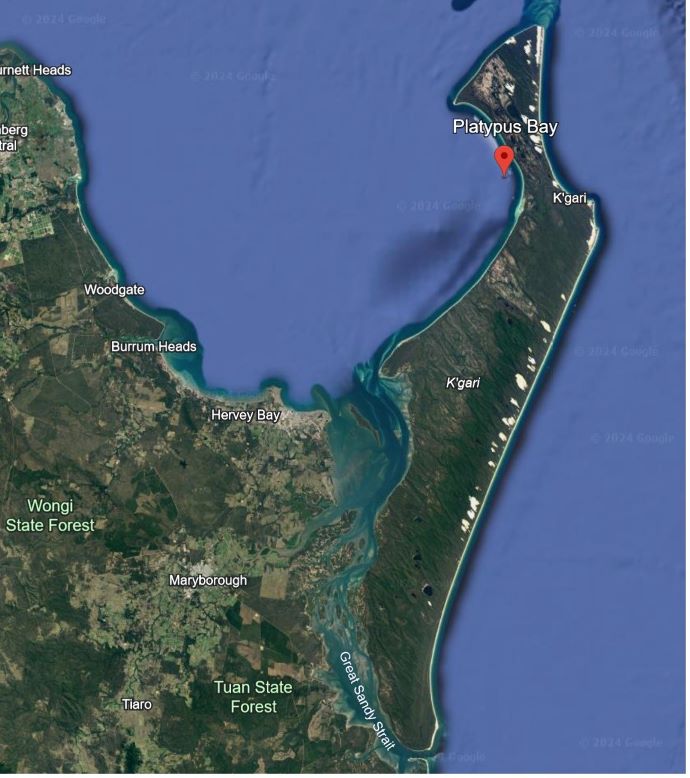It’s that time of year again. The Humpback Highway is full of traffic, coming and going. This years’ early leavers on the annual migration, the sub-adults, have had their swim up to parts north and are heading home for a huge feed, stopping in at Platypus Bay off the coast of K’Gari (Fraser Island) for a spot of R&R. K’Gari sits off the mainland, forming what you might describe as a baseball mitt shape. The whales must swim around the tip of K’gari to stay on the highway, but quite a few come into the bay perhaps by accident (if they’re young) but often deliberately.
The sexually mature adults will be here later. There’s giving birth and mating to be considered, and for mums, they need to fatten up their calves for the trek down to the freezing waters of the pole. Although quite a few do that in Platypus Bay where the waters are calm.
But that’s later in the year. Around August the teenagers are in the Bay, curious and interested in people, more than ready to say hello.
I’ve gone out every year since we’ve lived here at Hervey Bay, so this was at least my seventeenth trip. (Some years I’ve gone out more than once.) I’d thought about missing this year because of moving house and all but we went for a walk on the beach and the sea was calm and the breeze a zephyr, ideal for a comfortable whale-watching experience. So, I booked passage for the next morning on Whalesong.
I was not disappointed. We encountered our first pod (two or more whales traveling together) almost as soon as we reached Platypus Bay, so a long way south. And there were whales everywhere. The boat was beside a couple of whales but over there was a blow and over there a breach and over there another blow. (A ‘blow’ is when a whale comes to the surface and exhales, sending a spout of steam into the air – it’s where the expression ‘thar she blows’ originated in the old whaling days.) The various whale watch boats were spoilt for choice. From the rock bottom days of the seventies, when whaling was stopped, the whales have rebounded. It’s estimated 40,000 whales make the migration up and down the east coast of Australia, and just as many will be doing the trip on the west coast. Our skipper said about a third of the whales on the migration will pop into Platypus Bay for a few hours or up to a week.




This is a spyhop, where the whale hangs vertically in the water so it can look at what’s on the boats – or anything around it. They have excellent eyesight and can see through the water much better than we can. The eyes are below the surface



This is a head lunge, sort of the opposite to a breach, where the whale slaps its head down on the water. It’s thought to be an aggressive action.

This is a peduncle slap where the whale twists and slaps down with all the force in that massive muscle that ends in the tail. Humpack top speeds seem to be around 20kph and on migration they cruise along at 5-10kph – although estimates vary. We don’t know all that much about them.
Back in the day we were told humpbacks don’t feed at all on migration, but now it’s recognised that they are opportunistic feeders – if they come across schools of tiny fish or krill, they’ll eat. But that’s more likely further to the south,

It isn’t all plain sailing for the whales. This one seems to have had a nasty encounter with maybe an orca or a shark. See the chunk out of its back near the tail? We were told it will be able to recover from the injury.

This boat is one of the few that offer ‘swim with the whales’. The swimmers are roped together to the right of the stern. The whale (just near the stern) will approach if it feels like it.

The underside of the tail is a whale’s fingerprint (as it were). They are all unique. I’ll be sharing a few of these with Happy Whale to increase our knowledge of the whales and their travels.
All in all a very full day.
In other news, one of my stories has been chosen for this year’s Pets in Space anthology. I’m excited.

